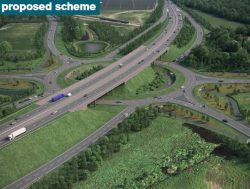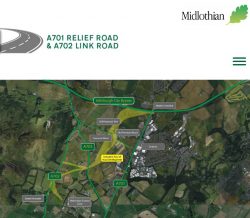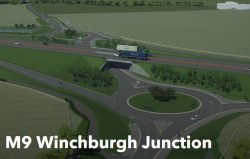Stop Press 13.1.22: Traffic Reduction ‘Route Map’ published. Much as we predicted (2 & 2.2 below) – some good stuff, but without tougher Demand Management, notably Road User Charging, the 2030 traffic reduction commitment is very unlikely to be met. Consultation opens, closing 6 April 2022.
What can we expect in Edinburgh and Scotland for bike use and wider sustainable transport in the uncertain year now beginning? What will Spokes – and you! – need to support, to oppose, to provide, to improve or to highlight in order to encourage and speed up the move towards more sustainable and healthy places to live and get about? This article outlines some topics, large and small, which we expect to matter in 2022.
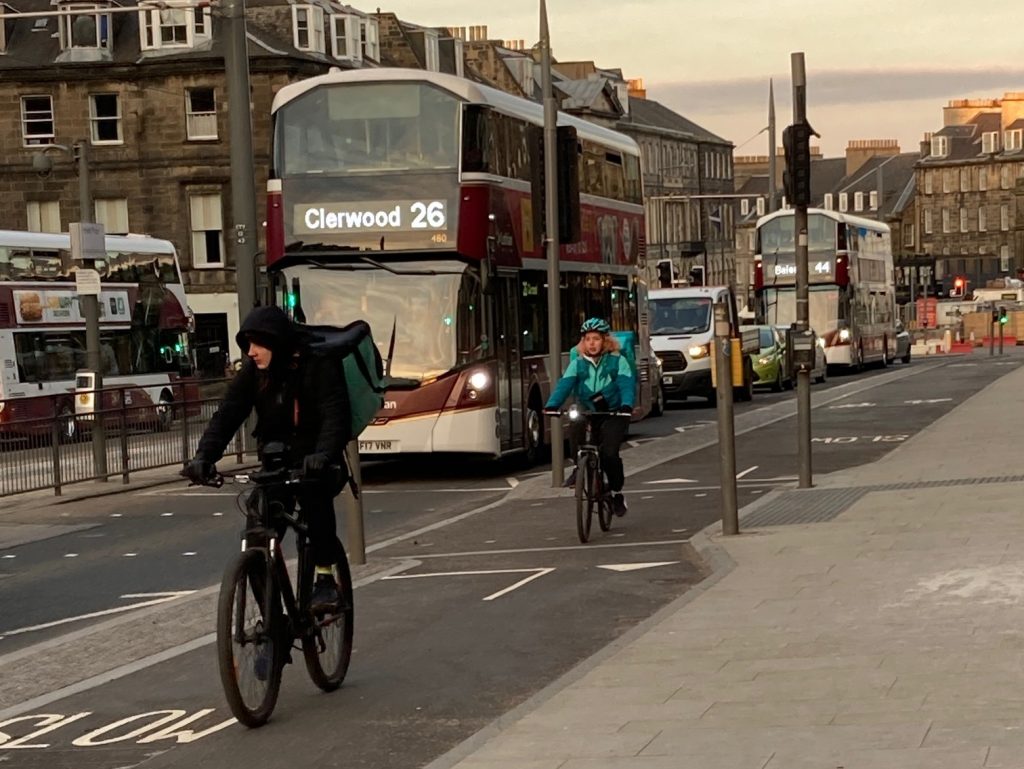
There’s a great deal to think about, so we’ve condensed everything into a few lists. For each item we give a link or links for further information. Please let us know anything significant that we’ve missed – and of course much will happen that is not predictable.
The items are largely good news – it is great that they are happening or are on the agenda. However, most need to go further or faster. These are issues you can raise with your MSPs (if national) or councillors (if local).
After the lists, we say more on the promises by Scottish Government, Edinburgh City Council and Regional Transport Authority SEStran to cut car-km significantly by year 2030. This is probably the most important – and the most difficult – policy of all those listed. Its benefits, if successful, would be major and widespread, including climate emission reductions (the top objective of the policy), improved public health, reduced opposition to roadspace reallocation and strengthened local communities as places to live.
The traffic reduction ambitions will be very hard to achieve, and will be easy for politicians to ‘forget’ when it comes to day-to-day decisions. Therefore it is vital for us (you!) to keep this high in political and public consciousness. If you are contacting a politician over some transport or planning issue, make sure to remind them of its linkages to their promise to cut car-km.
1.1 Scottish Government in 2022
- Commitment announced in December 2020 to cut car-km 20% by 2030 – action is needed!! and the overdue ‘route map’ on how to reach the 20%. More discussion in 2.2 below.
- Scottish Budget 22/23 – how will the big increase in AT cash be used?
- Scottish Budget 23/24 – a much bigger rise is needed as the penultimate stage before the promised 24/25 10% of the transport budget
- NPF4, draft National Planning Framework – new planning policies towards a net zero Scotland, though we are concerned there may be too may let-outs for developers. It also promises ‘National Developments’ including a national AT network, Edinburgh Tram expansion, Edinburgh Waterfront development. Info: para 2111 NPF4
- STPR2, draft Strategic Transport Projects Review – transport investment priorities for Scotland for 2022-2042, including 20 ‘immediate’ priorities but decisions awaited on longer-term major projects. Previous consultation was early 2021, so our response came before the big AT cash rise was announced. However, we were very concerned to see insufficient attention to demand management. Info: para 2102 STPR2
- Pavement parking & double-parking rules are slowly moving forward – good, but we (and Living Streets) are worried about some of the Scottish Government’s proposed exemptions as well as the glacial pace of moving towards implementation. Info: para 2112 Pavement Parking Regulations
- Cycling by Design The drastically revised Transport Scotland guidance on cycling infrastructure design [23MB pdf] has been widely welcomed. The challenge now is to ensure it is known and used by all councils, developers and the Scottish Government itself.
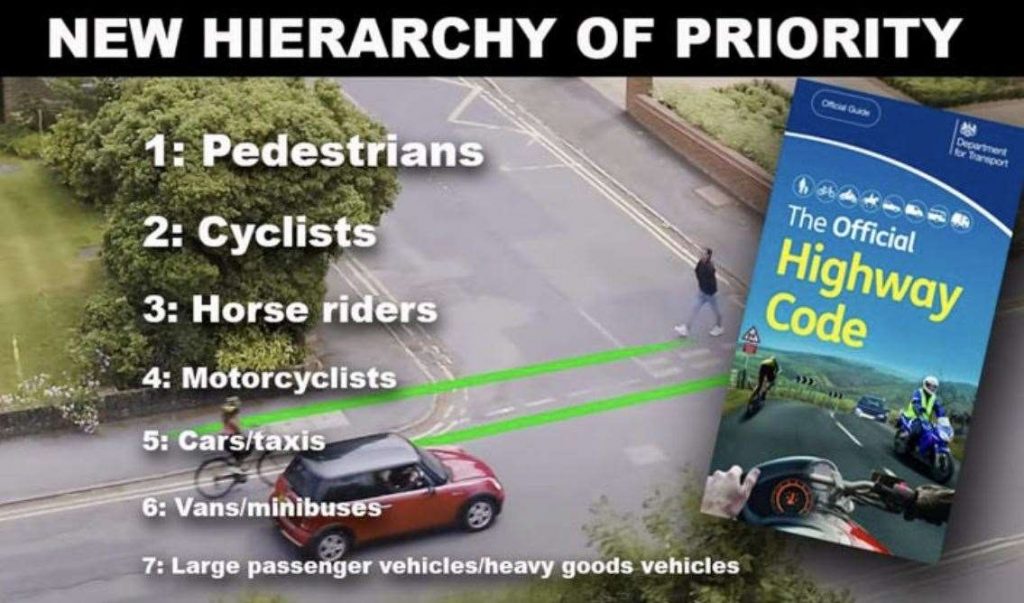
- [UK] Highway Code – significant changes expected to come into force on 29 January, including a new ‘Hierarchy of Responsibility’ where the user of the vehicle with the greater potential to cause danger has the greatest responsibility with regard to people who pose less danger and are more at risk. Motorists, therefore, in respect of pedestrians and cyclists; and cyclists in respect of pedestrians
1.2 Edinburgh City Council and Lothians Councils in 2022
- Edinburgh target to cut car-km 30% by 2030 – actions?? More in 2.1 below.
- Local elections in all Councils – 5 May. In Edinburgh the new Council must retain its commitment to 10% of the transport budget (capital and revenue) for cycling provision. Amongst other things, this enables big Sustrans ‘Places for Everyone’ match funding – now up to 70% of project costs, previously 50%. Our election article from the previous (2107) council election is here – we hope to do similar this time.
- Travelling Safely/ Spaces for People – improving and making schemes permanent, especially main-road cycleroutes. After much campaiging, Scot Govt has simplified the rules, so that the current temporary schemes (TTRO) can remain during the continuing pandemic, to be followed by one major (ETRO) public consultation rather than the two repetitive consultations (ETRO + TRO) previously required. Info: para 2111 Traffic Regulation Orders
- CCWEL City Centre West-East Link – work due to begin Jan/Feb 2022 – at last! The design is not perfect, but a major step forward for the Council and for people getting around safely and sustainably. Background: many CCWEL paras!
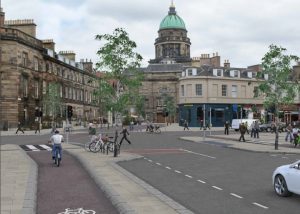
CCWEL plans, Melville St 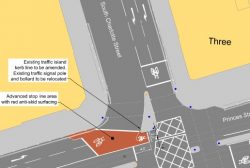
Tramline remediation, South Charlotte St 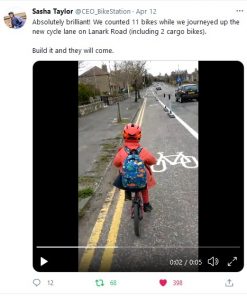
Spaces for People/ Travelling Safety
- Tramline Phase 3 safety measures for original tramline – some now implemented but important changes at South St A St, South Charlotte St, Grosvenor St, Haymarket very overdue – meanwhile crashes/injuries continue. Phase 4 is West End Junction, but no plans yet drawn up
- (Many) other delayed active travel schemes as in the Active Travel Investment Programme, ATIP Info: para 2110 AT Investment Programme
- Major Junctions Review is progressing too slowly [initiated November 2020] – notably Portobello Sir Harry Lauder jn (site of two cyclist deaths in two years.. Info: paras 2110 & 2011 PB High St) and West End junction (site of Edinburgh’s first tramline-related cyclist death)
- Leith Walk tramline cycleroutes – there was no consultation on some key design details, resulting in a very disappointing downhill route with built-in dangers for pedestrians, especially blind people, and cyclists. Info: para 2112 Leith Walk downhill Better is needed on the uphill side, where work has not yet started, and ideally improvements to the existing downhill route. Unfortunately the contract is ‘Design & Build’ which, as we understand it, means that the contractor can do what they want as long as it fits within the agreed contract parameters, and any changes later requested by the Council tend to be at very high cost – a severe problem also experienced with the first tramline.
- Foot of Walk to Newhaven tramline-avoidance cycleroute – this is being designed by the Council AT team, but too little consultation so far Info: paras 2101 & 2102
- George Street – Council must confirm plans are genuinely for a traffic-free street (as part of CCWEL); official messages are not consistent – otherwise separate cycleroutes needed Info: paras 2102, 2011 & earlier
- Active Travel Action Plan – new version long overdue, now promised for Summer 2022
- Transport & Planning policy: final version of City Plan expected – overall good, but we have several concerns Info: para 2111
- Road resurfacing – consultation on incorporating active travel measures in resurfacing projects has largely ceased during the pandemic, despite a 2018 Committee decision requiring an annual overall consultation followed by consultation on appropriate individual schemes. This must restart
- Cycle Hire – replacement scheme urgently needed, designed to avoid repeat vandalism problems. Council working on this and some interim initiatives, but with what priority?
- 20-minute neighbourhoods policy – what concrete actions will we see this year?
1.3 Regional in 2022
- SESTRAN Regional Transport Strategy to be finalised … it includes adopting the commitment to a 20% reduction in car-km by 2030. Info: para 2201
- Road-building projects including Sheriffhall roundabout/flyover Info: para 1912, A701/A702 Info: paras 2111 & 2109) and M9 Winchburgh Junction Info: paras 2010 & 2110. These continue through planning processes towards implementation unless sufficient opposition (anyone see a contradiction with the previous bullet point?)
1.4 Spokes in 2022 – in addition to working on all the above!!
- East Lothian Spokes map – new edition expected late 2022
- Public meetings including local election hustings Previous Spokes public meetings
- Stalls at community events, bike events, farmers’ market etc – let us know of any good opportunities
- Our annual major competition – send us your ideas for a theme! Previous Spokes competitions
- Cargobike grants for local community organisations continuing (and for households if another philanthropist appears)
- Spokes Porty, Spokes South Edinburgh, Spokes Dalkeith – local activity!
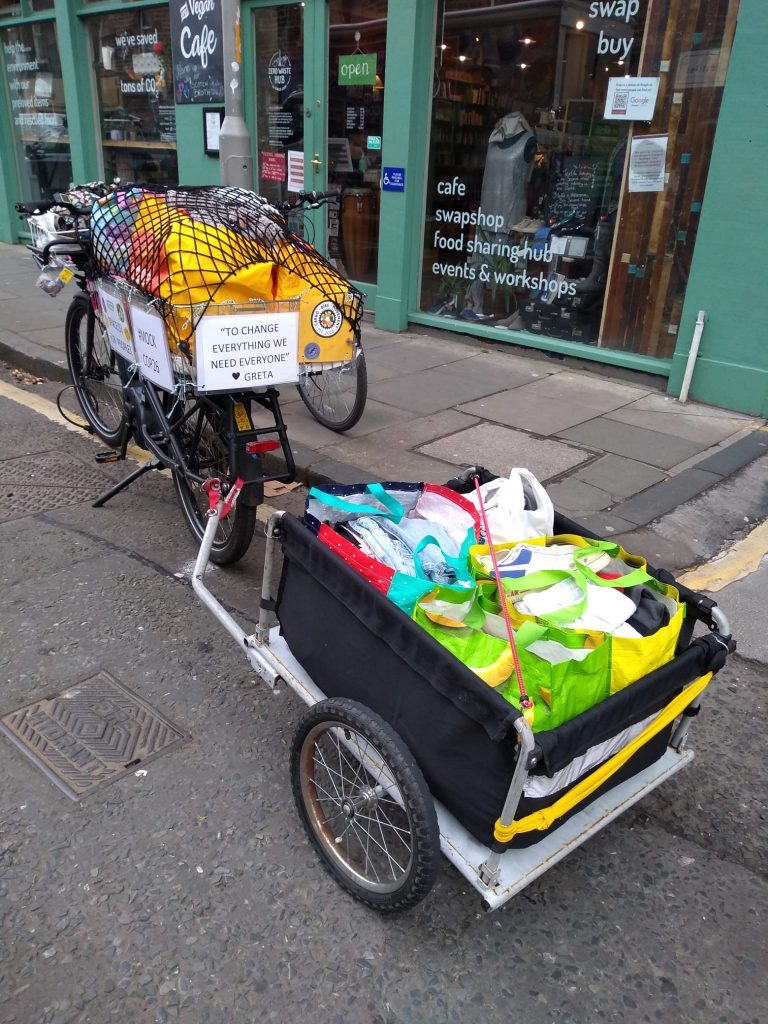
A Spokes-supported cargo-bike, helping create the future 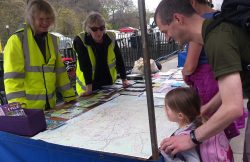
Spokes stalls 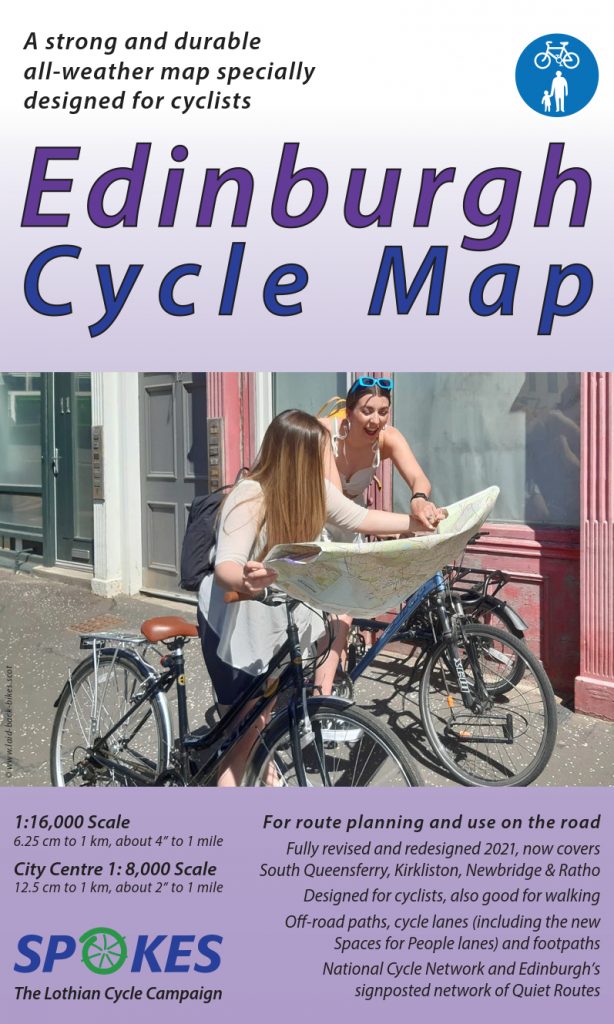
The new Spokes Edinburgh Bike Map – now with Spaces for People main road protected cycleroutes 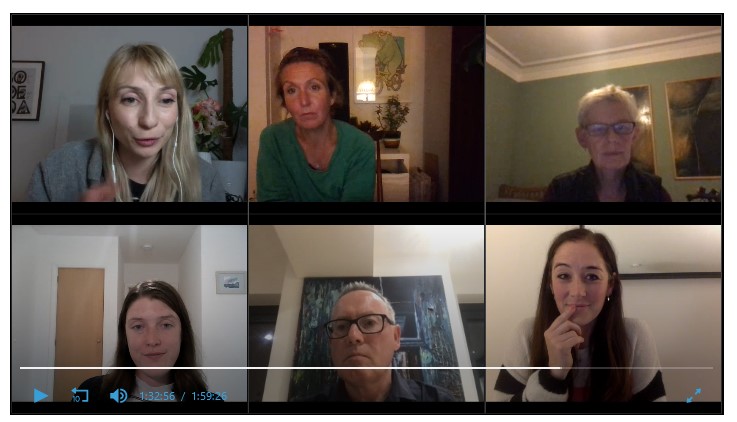
Spokes public meetings
2 The Biggie – Traffic Reduction, Scotland and Edinburgh
The Scottish Government has committed to a 20% reduction in car-km across Scotland by 2030, the SEStran Regional Transport Strategy adopts the same 20% ambition, and Edinburgh City Council has a target for a 30% reduction. These are hugely ambitious aims, given the rising trend of car use over many years, now accentuated by growing car use as a result of covid concerns. Yet, as mentioned above, traffic reduction is a top imperative for climate, health and place reasons.
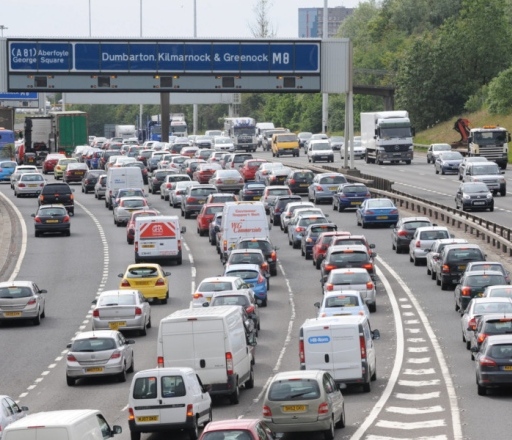
It will be vital for all concerned people and organisations to keep politicians’ feet to the fire, to ensure actions commensurate with these commitments, and to keep the commitments high in the public consciousness. Otherwise we face further disasters like the utter failure of the Scottish Government’s 2009 ‘vision’ of cycling comprising 10% of all trips by 2020, where government actions were dismally inadequate to achieve the promised outcomes, despite regular warnings from ourselves and others [example: section B3]; or the 1998 UK Road Traffic Reduction (National Targets) Act, where Ministers used a ‘get-out’ clause to escape the intentions of the promoters of the Act.
2.1 Edinburgh City Council and traffic reduction
Edinburgh’s 30% reduction in car-km by 2030 was agreed as a target at the 11.11.21 Transport Committee. The Committee report had also suggested parallel targets for increased walk, cycle and bus use, but a decision on this was postponed. Spokes argues that the traffic reduction target is the top issue and setting other targets is too arbitrary and might lead to competition between other modes, rather than cooperation.
The Council aims to meet its 30% target through actions in the City Mobility Plan (CMP), with progress (or not) being reported every two years. The CMP is part of a wider policy package including the City Plan (not yet final), 2030 Climate Strategy and the 20-minute neighbourhood strategy. Nonetheless, more of a ‘route map’ to reach the target would be welcome – as the Scottish Government keeps promising for its 20% car-km reduction commitment.
CMP includes politically challenging ‘demand-management’ measures including roadspace reallocation on arterial roads and a workplace parking levy, so councillors will need to show continuing courage – and to be supported if and when they do so.
We are however, very concerned over several schemes which will increase road capacity on and beyond Edinburgh’s periphery (2.2 below). Of these, Sheriffhall falls within Edinburgh City Council area. Although it is funded by the Scottish Government through the City-Region Deal, the Council could follow the example of East Renfrewshire Council who have secured changes to Glasgow City-Region deal, to scrap a major road project and use the cash instead for a new rail station, country park measures including active travel, and a much smaller road upgrade.
2.2 Scottish Government and traffic reduction
The Scottish Government 20% car-km reduction commitment first appeared over a year ago, December 2020, in the Climate Change Plan Update [Links: 2012 Climate Change Plan Update]. From the outset we recognised [section 2(b)] that this was a very bold target which we said “will demand exceptional determination and commitment.”
A ‘route map’ of actions to achieve the 20% was promised for late 2021, but this has still not appeared as of the start of 2022. Already a whole year, a 1/10th of the time to 2030, has passed since the 20% commitment, with no clear path yet known, and no real public engagement in the concept. Moreover, 2021 was a year in which car use had fallen significantly, due to Covid, presenting an opportunity to lock in the benefits. Instead it has been allowed to re-assert itself, and indeed we understand there is some evidence of car travel moving into new areas as former car commuters who now work from home use their car in the day for local trips such as shopping or school.
More positively, we have seen hints that the route map does now exists in a fairly advanced draft form and will be issued for public consultation. Moreover, it is rumoured to include an analysis of the need for traffic reduction which could have been written by a campaigner!
Less surprisingly, the draft route map is said to concentrate heavily on the ‘carrots’ approach initially and only move to significant demand management measures later on. This would be a sure recipe to miss the 2030 deadline since car trips are notoriously difficult to shift by carrots alone. Demand-management measures should be introduced and explained to the public in parallel with the carrots of improved active travel, public transport and digital connectivity opportunities, so that people see and understand the quid pro quo and do not settle into a new pattern of continuing car use despite improved sustainable opportunities.
Conversely, the public will be very confused by continuing Ministerial and councillor assurances that road expansion such as A9 dualling and big local road schemes (e.g. see Regional list above) are still going ahead. Why on earth spend many £100m’s on expanding road capacity to cater for a 20% reduction in car-km??
?? Why spend £100m’s expanding road capacity to cater for a promised 20% reduction in car-km ??
In terms of demand management, whilst some important powers (e.g petrol duty) are UK-wide, this is not an excuse for inaction. For example, the Scottish Government could now be taking actions such as..
- encouraging and assisting Councils in the politically difficult task of reducing car parking opportunities, or increasing costs, as some European cities have achieved
- introducing congestion zones, as in London
- introducing toll roads, as in many other European countries, or reversing their scrapping of bridge tolls
- developing options and preparing the public for full road-user charging, to the extent of available powers
- legislating to expand Workplace Parking Levy powers to a full Premises Levy, so that large stores and leisure centres are charged for the number of customer spaces over a certain minimum.
Finally, whilst we will be pleased if (unexpectedly) the route map is in fact consulted on, we fear this could mean further delay. We are over 10% of the way to 2030, yet consultation is (apparently) still to come! The scale of change needed by 2030 does not allow for delay; thus any consultation should run in parallel with early actions which clearly contribute to the objective. Already implementation of the pavement-parking and double-parking legislation (see Scotland list above) is slower than expected, as is the introduction of Low Emission Zones.
3 What you can do
- When contacting your MSPs or councillors about transport issues, remind them of their ambitious commitment to reduce car-km. Very often this is anyway likely to tie in with the particular issue about which you are contacting them
- If the government does consult on the route map, we will let members know, but you can anyway email your MSPs to say what you would like in it and urge that it is published soon
- Pass on this article by retweeting our tweet and/or sharing on facebook
- Transform Scotland has published an article on wider sustainable transport issues for 2022.

